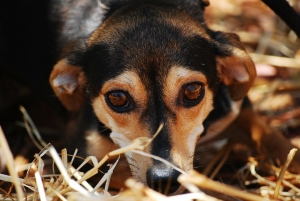As humans who love dogs, it’s natural for us to want to fawn over every dog we see, and what dog wouldn’t want petting and snuggles from every human they meet?
LOTS OF THEM!
Not every dog is like a typical Lab or Golden Retriever who wants to be best friends with every person they meet. Those dogs are wonderful and we couldn’t possibly love them more. They bring us love and joy as well as endless smiles. This article isn’t about those dogs.
This article is about the dogs who don’t want to make friends. The introverts of the dog world. The worried or scared dogs, the disinterested dogs and anything in between. These are the dogs who people often approach while insisting, “dogs love me!” STOP! Not every dog wants to say hi. Not every dog enjoys being pet by strangers. To help these dogs, you must learn to read them and ask their owner if it’s ok before you approach. Here are some ideas that could help you help a worried dog through a potential interaction.
Extremely Worried Dogs
Sometimes it’s obvious. When a person approaches an extremely worried dog, they may hide behind their owners or anything else available. They may cry, visibly tremble or urinate. These dogs do not need anyone approaching or trying to force interaction with them. They don’t want to say hi when they are clearly overwhelmed. As much as you might like to make friends and regardless of how much dogs usually love you, you should choose to leave this dog alone. Most of the time, these dogs should not ever have pressure put on them.
Do:
- Keep your distance to give this dog space
- Turn sideways
- Avoid eye contact
- Allow the dog the opportunity to investigate you on their terms if they choose to
- At the owners request, offer treats by tossing them towards the dog, but far enough away that the dog can choose to ignore them if they prefer.
Don’t:
- Do not try to make eye contact or stare at the dog
- Do not reach in toward the dog
- Do not approach the dog, especially if there is nowhere for the dog to go
- Do not try to hand feed the dog
Shy Worried Dogs
Some dogs are a bit shy. When a person approaches, they may back away to avoid contact. This dog may choose to investigate a human on their own terms if there is no pressure put on them. It’s good for them to have positive interactions with people who don’t overwhelm them, so calm interactions following the lead of the dog and taking direction from the owner are best.

Do:
- Turn sideways
- Give the dog space
- Get down low if possible (facing away from the dog) or stand up and ignore the dog
- If the dog is curious and the owner agrees, offer treats by tossing them on the ground or offering them in an open palm, but allow the dog to approach your hand, don’t push your hand toward the dog
Don’t:
- Don’t try to pet the dog
- Don’t make direct eye contact
- Don’t make sudden movements towards or around the dog
- Don’t make any loud noises
Introverted Dogs
This dog is not worried or shy, but is not interested in being friends either. Not all dogs are excited to be greeted by strangers. Some dogs are “aloof” by nature and while they may not be cowering, they are also not interested in being touched or petted. This dog may investigate you if they choose, but the decision should be theirs to make.
Forcing interaction with any of these dogs could result in making the situation worse by worrying or frightening the dog. Well meaning people often make situations worse by unintentionally forcing the dog into a situation where they feel unsafe. One event learning can stay with the dog for months, years or even life! A poor interaction can set a worried dog back quite a bit. If you love dogs, you may have to do it from a distance for the dog’s sake. Learn how to read basics in body language and always ask before approaching any dog.

